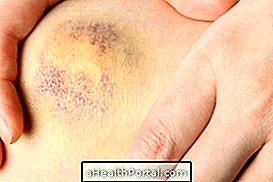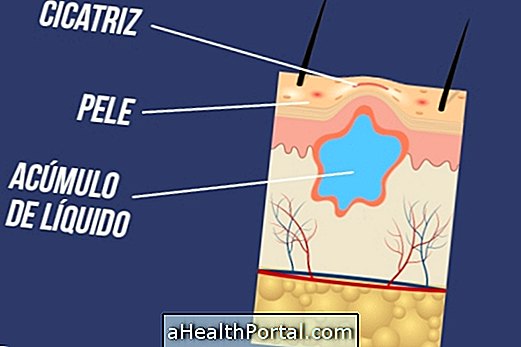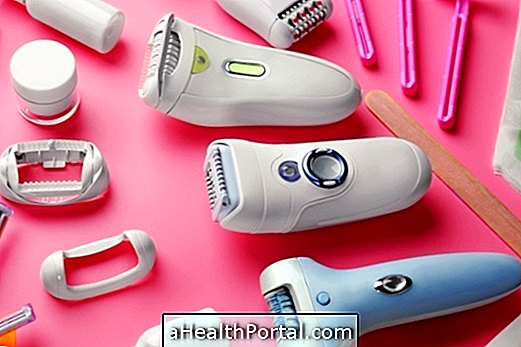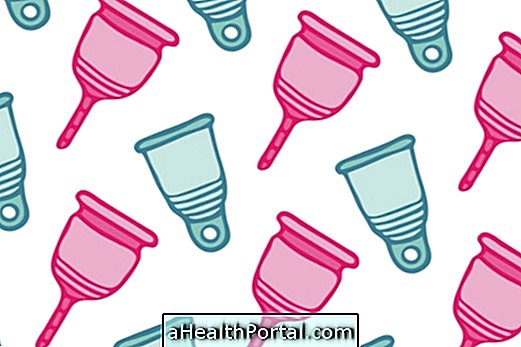Inflammation in the ear when properly identified and treated is not a risk, and is only uncomfortable, as it causes pain, itching of the ear, hearing loss and, in some cases, discharge of a foul discharge from the ear.
Although easily resolved, ear inflammation should be evaluated and treated by a medical specialist, especially when the pain lasts for more than two days, there is a feeling of dizziness or vertigo and the pain in the ear is very intense.

Causes of inflammation in the ear
Inflammation in the ear can be very uncomfortable, especially for children, and therefore, when the first symptoms of inflammation appear, it is important to consult the doctor so that the cause can be identified and treatment can be started. The main causes of ear inflammation are:
1. Otitis externa
Otitis externa is the most common cause of pain and inflammation in the ear and is more common in infants and children who spend much time on the beach or in the pool, for example. This is because heat and moisture can favor the proliferation of bacteria, leading to infection and inflammation of the ear and resulting in symptoms such as pain, itching in the ear and in some cases the presence of yellowish or whitish secretion. Here's how to identify otitis.
What to do: If you notice the symptoms of otitis externa, it is important to go to the pediatrician or otolaryngologist, so that the diagnosis can be made and treatment can be started. Treatment is usually done with the use of drugs to reduce inflammation, such as Dipyrone or Ibuprofen, but if the presence of secretions is checked, the doctor may also recommend the use of antibiotics. Find out which are the most commonly used remedies for ear pain.
2. Otitis media
Otitis media refers to inflammation of the ear that usually arises after the flu or sinus attacks, characterized by the presence of ear secretion, hearing loss, redness, and fever. As a result of an influenza or sinus crisis, otitis media can be caused by viruses, bacteria, fungi or allergies. Learn more about otitis media.
What to do: It is important to see the doctor to identify the cause of otitis media and to start treatment, which is usually done with analgesics and anti-inflammatories. If otitis media is caused by an infectious agent, the use of an antibiotic, usually Amoxicillin, may also be recommended for 5 to 10 days.

3. Injury during ear cleaning
Cleaning the ear with a cotton swab can push the wax and even break the eardrum, which causes pain and release of secretion in the ear.
What to do: To properly clean the ears and thus prevent infections, you can wipe the towel around the ear after bathing or peel two drops of almond oil into the ear to soften the wax, and then, with the aid of a syringe, also put some saline solution inside the ear and turn the head slowly so that the liquid leaves. Learn how to clean your ear properly.
4. Presence of objects inside the ear
The presence of objects in the ear, such as buttons, small toys or food, is more common in infants, and is usually accidental. The presence of foreign bodies in the ear leads to inflammation, with pain, itching and discharge of secretion in the ear.
What to do: If it is observed that the baby placed objects in the ear accidentally, it is important to go to the pediatrician or the otorrino so that the object is identified and removed. In more severe cases, the surgical removal of the object may be necessary.
When to go to the doctor
It is important to go to the otolaryngologist when the pain in the ear lasts more than 2 days and there are the presence of some of the following symptoms:
- Decreased hearing capacity;
- Fever;
- Sensation of dizziness or vertigo;
- Release of whitish or yellowish discharge to the ear and bad smell;
- Pain in the ear very intense.
In the case of children, the symptoms are noticed from their behavior, and can be observed in case of ear pain irritability, agitation, loss of appetite, the baby starts to put the hand in the ear several times and usually shakes the head to the side several times. Here's how to identify earaches in babies.


















